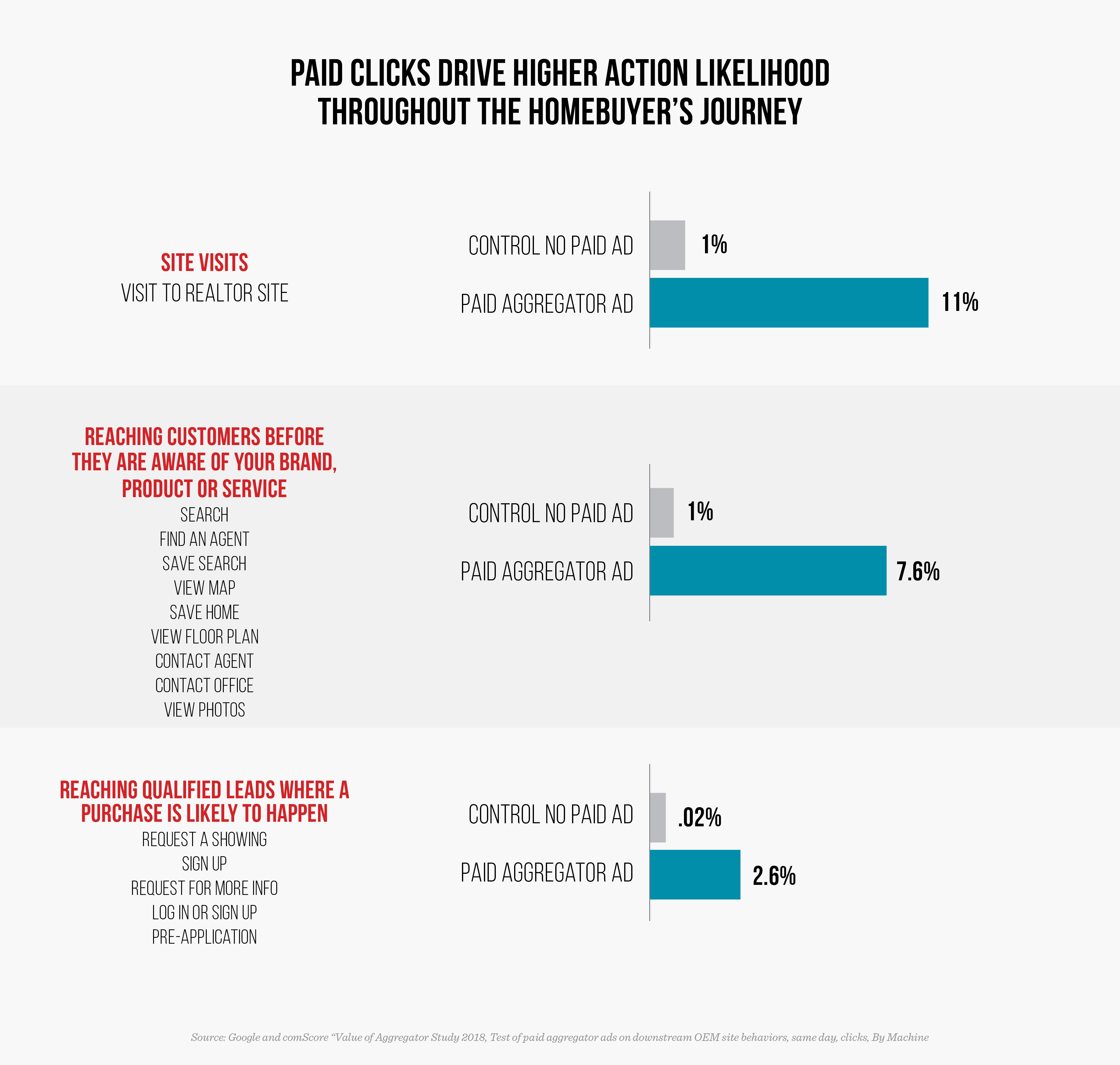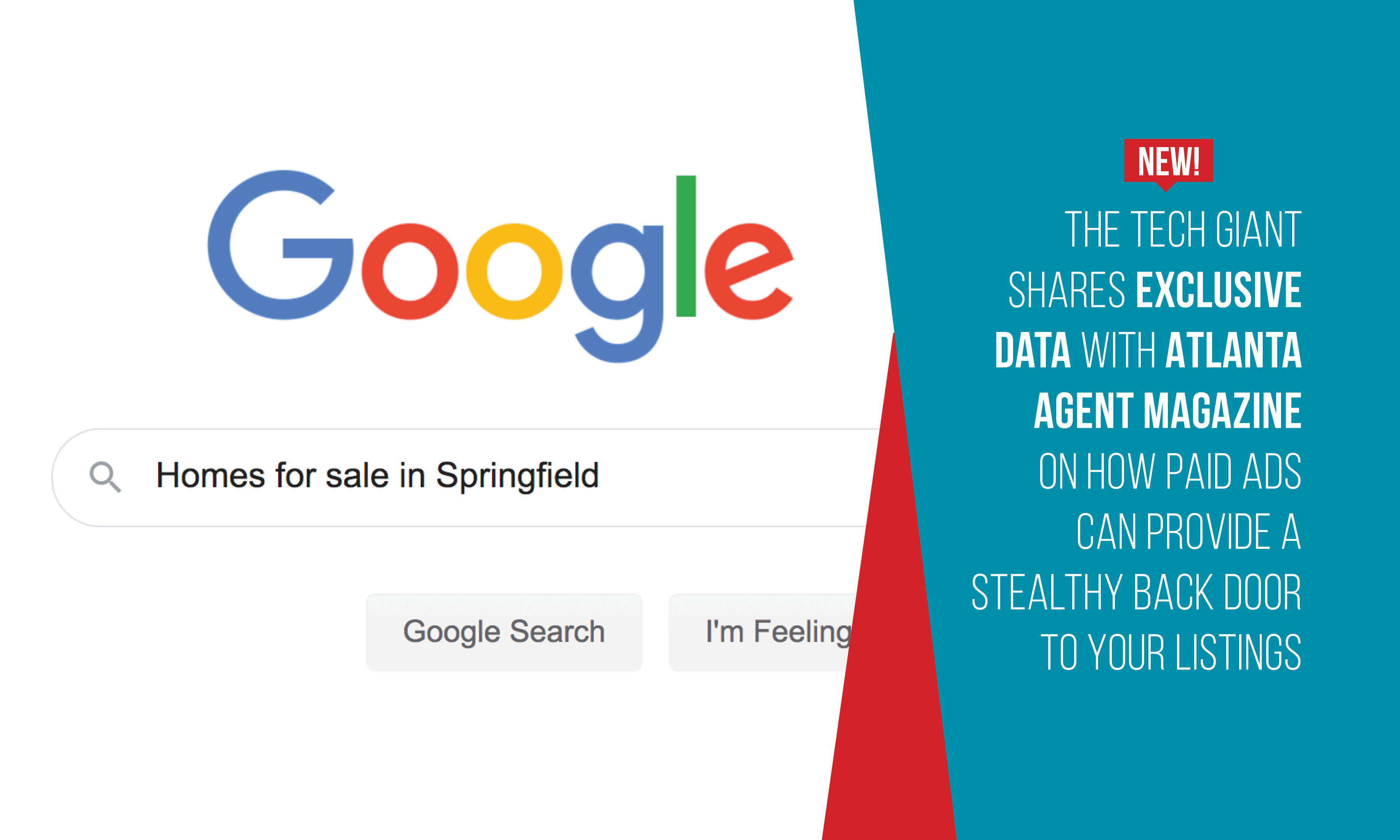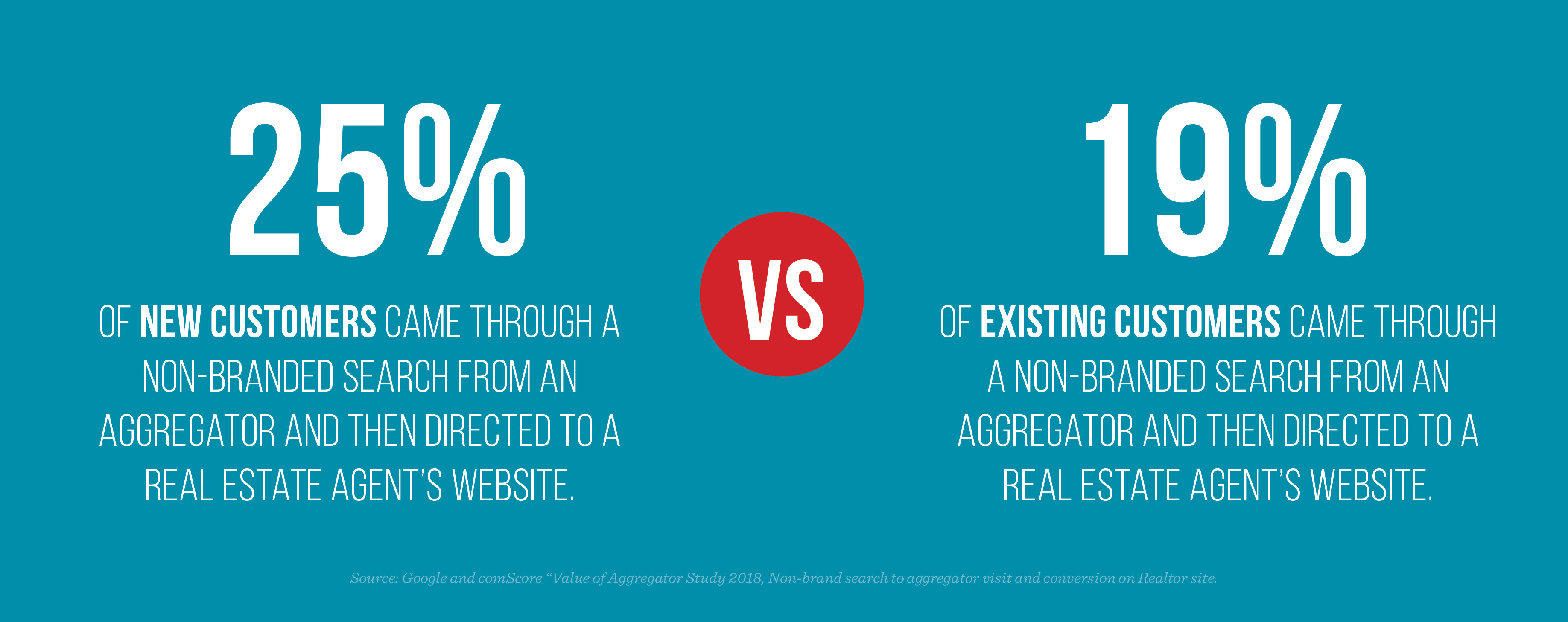Online real estate aggregators – that’s tech talk for the Zillows and Realtor.coms of the world – are getting ahead of their competitors, and driving more traffic to brokerage websites, through new relationships with Google.com, according to a representative of the tech giant.
In an exclusive interview with Agent Publishing, Jay Bowden, sales research lead at Google, says real estate agents and aggregator sites are “better together in driving home purchase intent.”
Twenty-five percent of non-branded searches that were directed to a real estate agent’s website through an aggregator were new customers, versus 19 percent who were existing customers, according to the report.
Still uncertain whether aggregators and paid ads make sense? Google’s internal study shows that 94 percent of those researching real estate listings used an aggregator at some point along their path.
“It’s a nice ecosystem when [aggregators] work with us, somebody searches homes … the paid listing shows up and someone clicks it – it’s not just that they go to [the aggregator], they then go on to show intent or interest in buying a home at a higher likelihood than someone who didn’t, which then benefits the person trying to sell the house,” he said.
And a lot of those clicks on paid, unbranded ads are new customers, according to Google. Nearly three-quarters (73 percent) of customers who visited a real estate agent’s website via an aggregator website had not previously visited the agent’s website in the last 30 days.
That suggests that the vast majority of consumers are seeing the aggregator’s website first.
“Seventy-three percent of people who visited a real estate website and ended up visiting it because they clicked on Zillow had not previously been on the real estate website in the past 30 days, meaning that the aggregator is driving new referral traffic to these Realtor sites that wouldn’t have come if Zillow wasn’t there,” he said. That makes the aggregator partnership “mission critical” in driving traffic to real estate sites, “because nobody just goes to them directly; they find it easier to go to the Zillows of the world,” Bowden said.
That makes the aggregator partnership “mission critical” in driving traffic to real estate sites, “because nobody just goes to them directly; they find it easier to go to the Zillows of the world,” Bowden said.
The report also notes that those who click on paid ads are more likely to take action.
The data shows that 1 percent of homebuyers who clicked on a broker site, and did not visit via a paid ad, purchased a home, while 11 percent who visited through a paid ad purchased a home.
For consumers who performed the basic actions – search, find an agent, save search, view map, save home, view floor plan, contact office and view photos – again, only 1 percent purchased a home without the direction of a paid ad, versus 7.6 percent who visited the site through a paid ad.
When their actions became more committed – request a showing, log in or sign up, request for more information, pre-application, contact agent – they were still more than twice as likely to make a purchase, according to the report. Bowden added that non-branded search – where consumers conduct general searches, such as “homes in zip code XXX” – is critical to driving visits on aggregator sites to new customers.
Bowden added that non-branded search – where consumers conduct general searches, such as “homes in zip code XXX” – is critical to driving visits on aggregator sites to new customers.
“So, when you think about building the right experience for your potential customer, it’s allowing them to find you when they’re searching for you. This is showcasing that you as a Realtor, or as an aggregator site, have the ability to shape that customer journey, and it’s about meeting them in these moments,” Bowden said.



